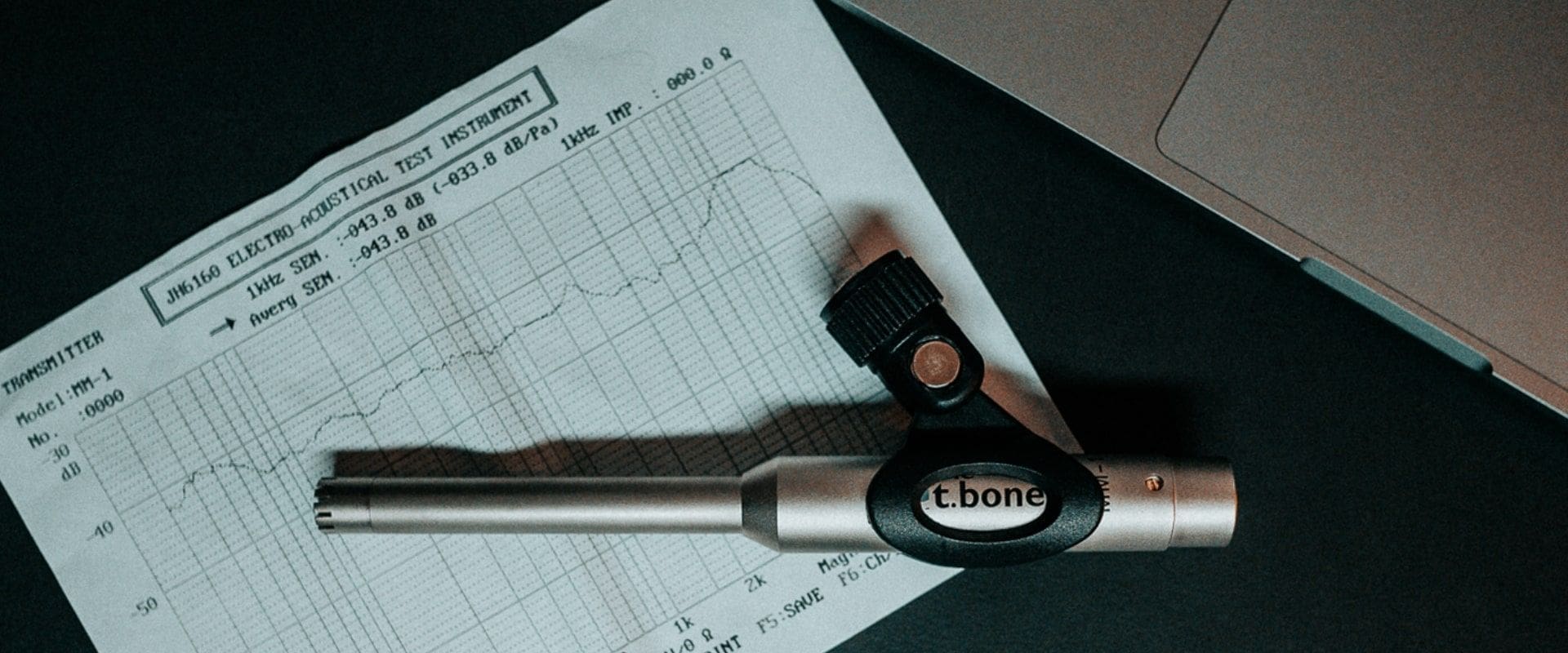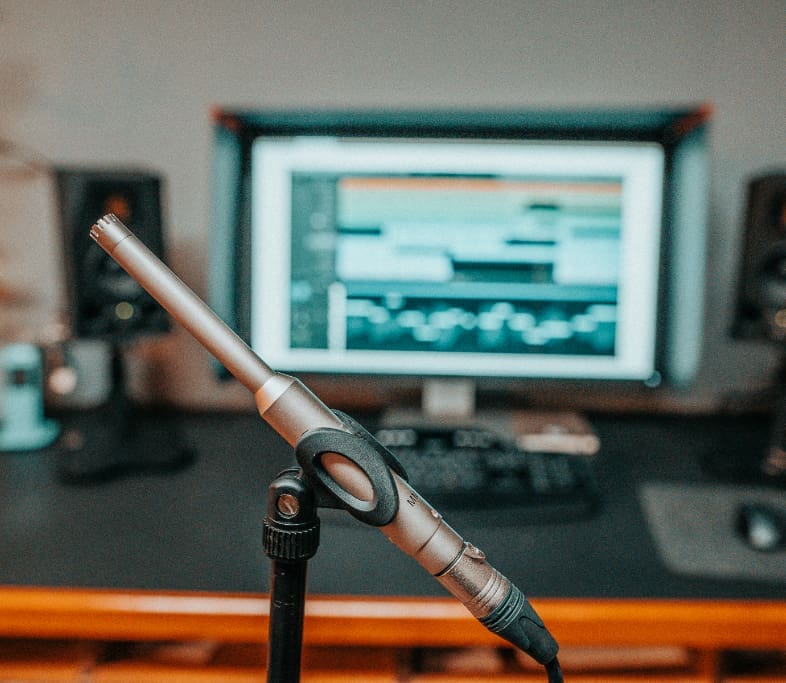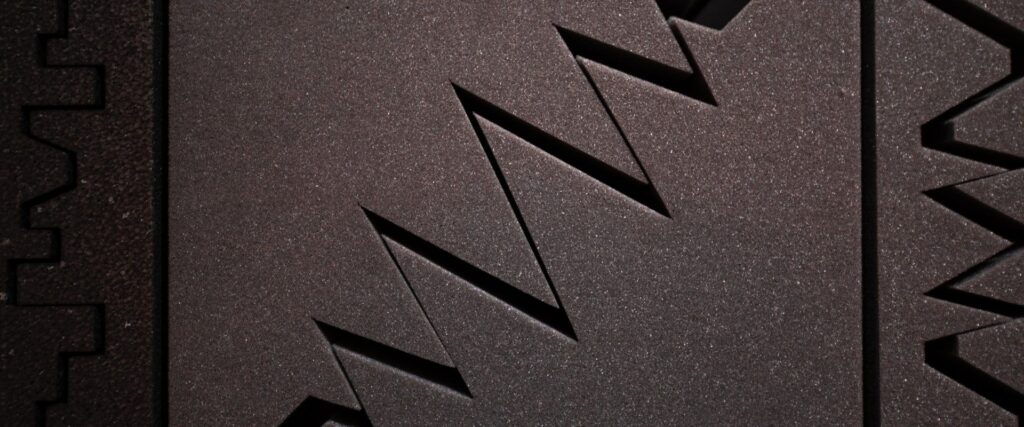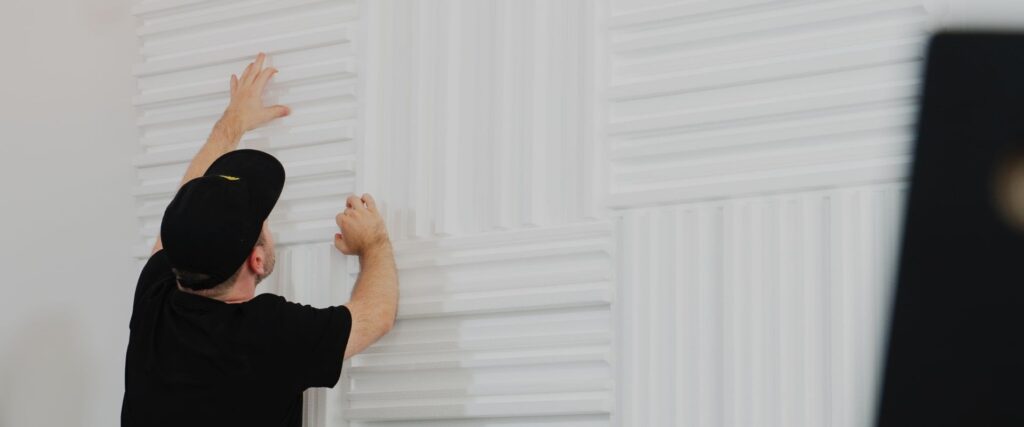
FREQUENCY RANGES
The frequencies that we can hear can be divided into several frequency bands. Everyone has heard the terms bass, mids and treble (highs). Sound consists of oscillating waves that propagate through the air. The frequency at which a wave oscillates is measured in Hertz (1 Hz = one oscillation per second). The higher the frequency, the higher the pitch. 20 Hz is in the very low sub bass range and can only be produced by very few instruments. Above 10 kHz, there are no fundamentals; it’s all harmonics and noise components.
It’s important to know that our perception of pitch is not linear, but logarithmic. 200 Hz sounds twice as high as 100 Hz, but 2000 Hz also “only” sounds twice as high as 1000 Hz, even though the difference is 1000 Hz instead of 100 Hz. This is why the bass or low frequency range ranges from 20 Hz to about 200 Hz, the mid range contains frequencies from 200 Hz to 2 kHz and the range from 2 kHz all the way to 20 kHz is the high frequency range.


In room acoustics, the low frequency range is treated differently from the mid and high frequency ranges. This isn’t due to fundamentally different physical properties. But in the low frequency range, the wave lengths are so long that it’s not practical to pretend that sound behaves like light, which works in the high frequency range. Some low frequencies can be hard to dampen and can linger in the room for a long time.
These modes aren’t necessarily a bad thing per se. But they become a problem when they cause a non-linear reverberation in the low frequency range, where certain frequencies stand out. This applies especially to situations where modes accumulate at some points in the frequency spectrum, while holes appear elsewhere.
To further complicate things, rooms don’t behave homogeneously in the low frequency range. There may be local build-ups or attenuations. Generally speaking, the low frequencies are most pronounced near the walls, ceiling, floor and in the corners. In order to achieve a uniform reverberation, it’s possible to target the low frequencies with special absorbers (bass traps).
More like this
You need to load content from reCAPTCHA to submit the form. Please note that doing so will share data with third-party providers.
More InformationYou are currently viewing a placeholder content from Turnstile. To access the actual content, click the button below. Please note that doing so will share data with third-party providers.
More InformationYou are currently viewing a placeholder content from Instagram. To access the actual content, click the button below. Please note that doing so will share data with third-party providers.
More InformationYou are currently viewing a placeholder content from Instagram. To access the actual content, click the button below. Please note that doing so will share data with third-party providers.
More Information



